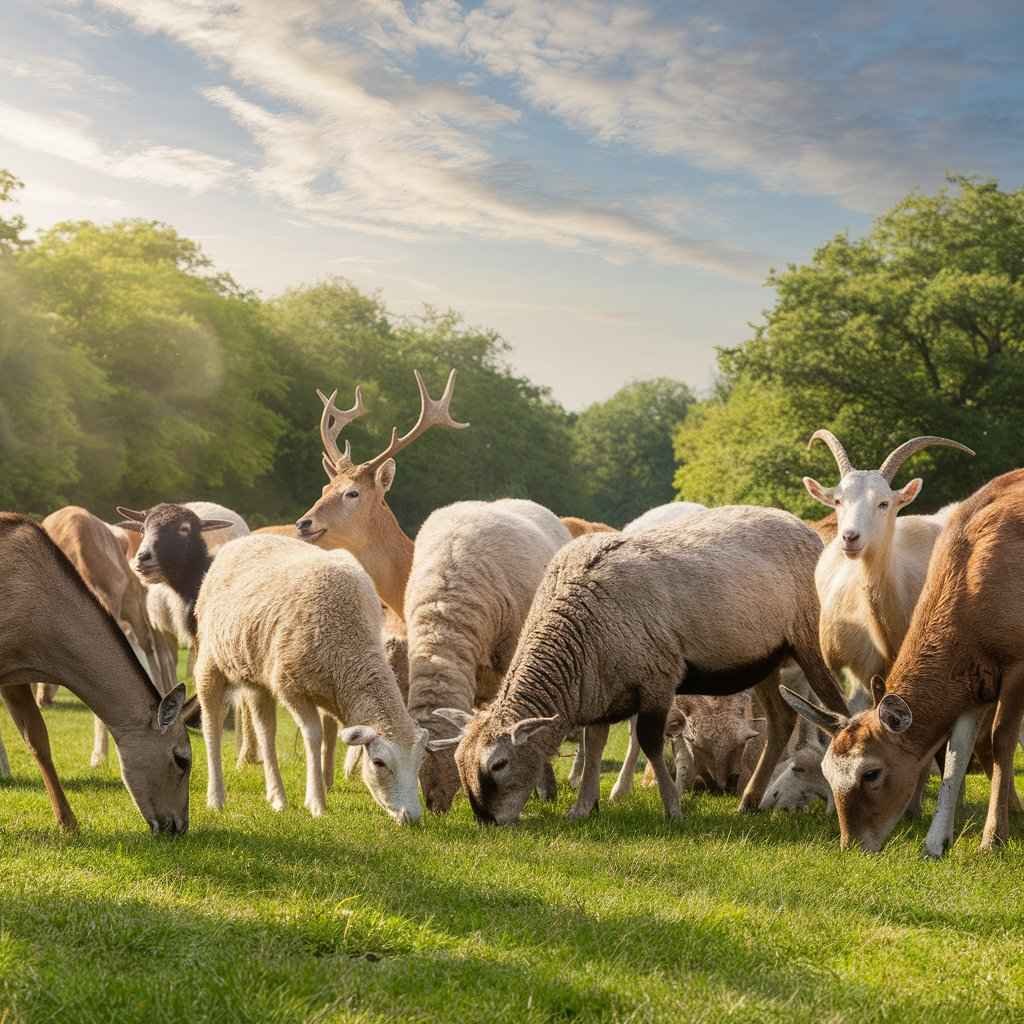Global agriculture, ecology, and human nutrition all depend heavily on ruminants, a diverse group of mammals identified by the multiple compartments in their stomachs. This group, which includes, among others, cattle, sheep, goats, and deer, is renowned for its capacity for effective fermentation-based plant material digestion. For the production of meat, milk, and fiber, they are essential, greatly enhancing global food security and improving economic livelihoods. But because of their environmental footprint—especially methane emissions and land use—they pose problems that call for continuous research and sustainable management strategies in order to minimize effects and maximize socio-economic advantages.
Table of Contents
Introduction to Ruminants

Ruminants are a fascinating group of herbivores that have a unique digestive system allowing them to thrive on a diet of plants, particularly those considered low-quality forage. Their remarkable ability to extract nutrients from these tough materials has made them a cornerstone of human civilization for millennia. From providing us with meat and milk to converting grasslands into usable land, it play a vital role in our world.
Scope of Ruminants
The scope of it is vast, encompassing both domesticated and wild species. Here’s a breakdown of their reach:
1. Agriculture and Economy
- Production of Livestock: They are essential to the production of meat, milk, wool, and leather. They make a substantial contribution to the global agricultural economy as well as the livelihoods of millions of farmers.
- Draught Animals: Ruminants, such as buffalo and oxen, are employed as draught animals in many developing nations to move cargo and plow fields.
- Byproducts: Manure from ruminant animals is used as fertilizer to increase crop yields and soil fertility.
2. Ecological Impact
- Grassland Management: By keeping grasslands in check and preventing vegetation from growing out of control, they support biodiversity.
- Nutrient Cycling: They contribute to the cycling of nutrients in ecosystems through grazing and manure deposition.
3. Scientific Research and Biotechnology
- Genetics and Breeding: The goal of ruminant genetics and breeding research is to increase productivity, disease resistance, and climate adaptability.
- Biomedical Research: Because ruminants and humans share some physiological characteristics, they are employed in a variety of biomedical research studies.
4. Food Security and Nutrition
- Protein Source: An important supply of high-quality protein and vital nutrients for human diets comes from them.
- Dairy Products: A staple food in many cultures, milk and dairy products from them add nutrition and diversity to diets.
Statistics on Ruminants
Cattle, sheep, goats, and other ruminants are essential to world agriculture and the economy. With billions of these animals globally, they supply necessities like milk and meat. But there are also serious environmental problems associated with their production, like methane emissions and large land use. These figures highlight the importance of sustainable management techniques in addition to their crucial role in ensuring food security and economic livelihoods.
1. Global Population
- Cattle: Approximately 1.5 billion cattle worldwide.
- Sheep: Around 1.2 billion sheep globally.
- Goats: Nearly 1 billion goats across the world.
- Buffaloes: About 200 million buffaloes, primarily in Asia.
2. Production and Consumption
- Meat Production: A major share of the world’s meat supply comes from ruminant meat, which includes goat, lamb, and beef. For instance, in 2020, the world produced roughly 72 million metric tons of beef.
- Milk Production: With an annual production of about 880 million metric tons, ruminants—particularly cattle—are the main source of milk in the world.
3. Economic Value
- Livestock Sector: The world economy receives trillions of dollars from the livestock sector, which is dominated by ruminants. For example, the cattle business in the United States is worth more than $60 billion.
- Employment: The ruminant farming, processing, and associated industries employ millions of people globally.
4. Environmental Impact
- Greenhouse Gas Emissions: Enteric fermentation is the main source of methane produced by ruminants, which accounts for approximately 14.5% of all anthropogenic greenhouse gas emissions worldwide.
- Land Use: Approximately 25% of the world’s land area is made up of pastures and grazing areas, which are used for ruminant farming.
These figures underscore the significance of ruminants in the world’s food production and economy, but they also highlight the environmental problems that come with raising them.
Frequently Asked Question(FAQ)
What are ruminants?
Ruminants are multicompartmental stomach-dwelling mammals that use fermentation to break down plant material. Cattle, sheep, goats, and deer are among the species they comprise.
What is the scope of ruminants in agriculture and economy?
Global production of meat, milk, wool, and leather depends heavily on ruminants. They produce manure, which improves soil fertility, and they also act as draught animals.
Related Articles

